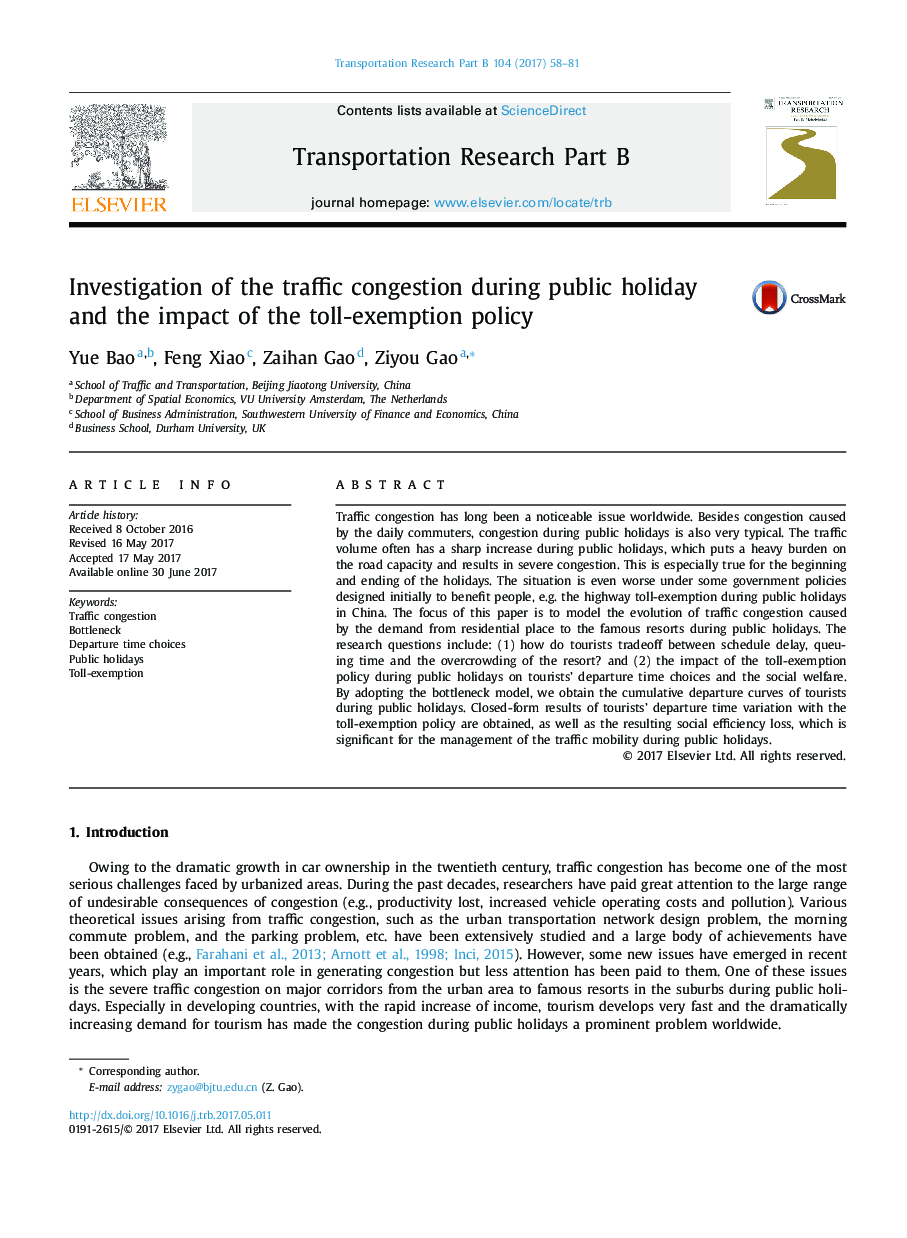| Article ID | Journal | Published Year | Pages | File Type |
|---|---|---|---|---|
| 5126952 | Transportation Research Part B: Methodological | 2017 | 24 Pages |
Traffic congestion has long been a noticeable issue worldwide. Besides congestion caused by the daily commuters, congestion during public holidays is also very typical. The traffic volume often has a sharp increase during public holidays, which puts a heavy burden on the road capacity and results in severe congestion. This is especially true for the beginning and ending of the holidays. The situation is even worse under some government policies designed initially to benefit people, e.g. the highway toll-exemption during public holidays in China. The focus of this paper is to model the evolution of traffic congestion caused by the demand from residential place to the famous resorts during public holidays. The research questions include: (1) how do tourists tradeoff between schedule delay, queuing time and the overcrowding of the resort? and (2) the impact of the toll-exemption policy during public holidays on tourists' departure time choices and the social welfare. By adopting the bottleneck model, we obtain the cumulative departure curves of tourists during public holidays. Closed-form results of tourists' departure time variation with the toll-exemption policy are obtained, as well as the resulting social efficiency loss, which is significant for the management of the traffic mobility during public holidays.
